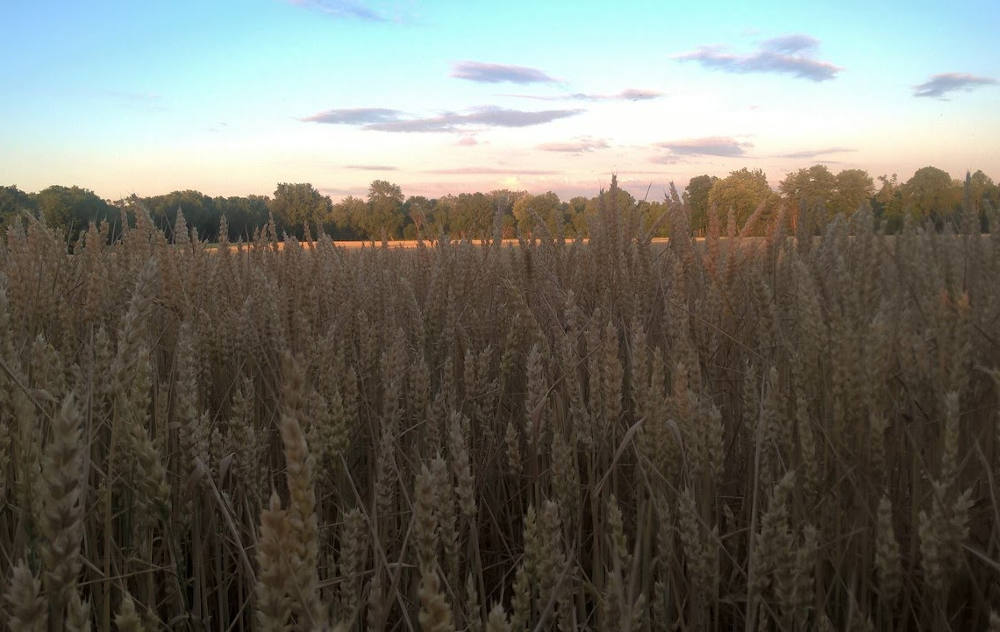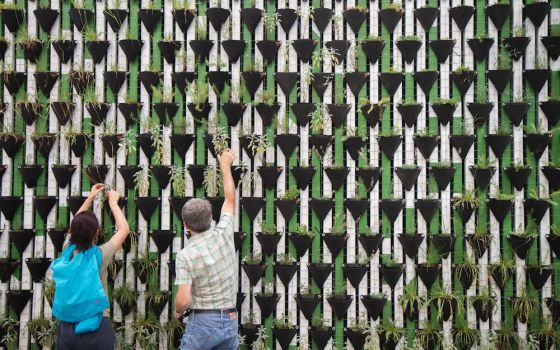
A wheat field near the Abbey of the Genesee in Pifford, New York. (Brenna Davis)
Third week of Advent—Consumption
Day 19: Thursday, Dec. 17
REFLECT
"Find the shortest, simplest way between the earth, the hands and the mouth."
- Lanza del Vasto
"We all eat. What we eat, where it comes from, and the process of obtaining it all leave their impact on us and on the earth. … In the US our food travels an average of 1,200 miles before it reaches our home."
- James T. Mulligan, "The Great Hunter-Gatherer Continuum" from Simpler Living, Compassionate Life
In terms of consumption, food is the most common item, and arguably the most important, that we buy and use. However, many of us have become disconnected from the land where our food originates, the process of how it is grown, the people who grow it and their working conditions.
For example, I recently made a cup of homemade chai with spices I bought from our local grocer. As I was waiting for the water to boil, I noticed the countries of origin on the front of the packages: The anise was from China, the cardamom from Guatemala and the cloves from Indonesia. These ingredients traveled thousands of miles to get to me — nevermind the flax milk, ginger and cinnamon I used that had no information about their place of origin. The shipment of these spices across the globe is wildly inefficient in terms of greenhouse gas emissions, and I was left wondering why our food system is set up this way. Isn't there a simpler path?
In his essay "The Great Hunter-Gatherer Continuum," James T. Mulligan shares a spectrum that we can use to help increase our connection to the food we consume. On one end of the spectrum, we have the most common sources of food that our culture and economy support, and on the other the more earth-friendly sources. They are listed below:
- supermarket only
- selective supermarket (buying local, bulk, organic choices when possible)
- some specialized (sometimes going to a co-op or natural food store)
- both (supermarket and specialized)
- exclusively specialized
- farmers' market
- subscription farm (community supported agriculture)
While it is hard to eat completely local food, the more we can integrate numbers 5-7 into our eating habits, the more likely we are to know where our food originates and to support farmers who use methods that sustain the earth. As a result, these simple, healthy and nutrient-rich foods sustain us.
Are you conscious of where your food originates? If not, what is one change in your diet that you could make to become more closely connected to what you eat?
ACT
Explore Community Supported Agriculture programs (CSA) in your area. Some CSAs run year-round. Challenge yourself to find one seasonal locally grown food item that you can integrate into your diet during Advent or try to prepare one dish with only locally sourced ingredients.
View the Advent Simplicity Calendar for an opportunity to pause and reflect on how you have integrated simplicity into your Advent.
Simple Advent, Abundant Life
reflect | act
Sign up to receive daily emails for this Advent reflection series.
Advertisement








